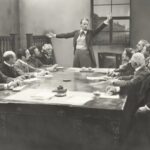You could have something in common with Michael Phelps, Simone Biles and Emily Infeld.
It’s not fierce determination or daily 4:30 AM workouts. (Well, this might be the recipe for some.)
It’s practice. For you, it’s presentation practice.
When the gymnast approaches the uneven bars, she hasn’t waited until then to see how it all comes together. She’s not expecting that the routine will magically form because she’s “gone over it in her head.”
She would never leave that to chance. Nor should you.
Rehearsing a presentation only works if you say the words out loud.
I promise you, Simone Biles doesn’t write down her routine, put it on a poster, and leave it at that. The world class athletes practice the entire event.
When we review our notes or presentation slides internally, our brain fills in the gaps between ideas because we understand the connections. The challenge comes once we compel those thoughts and ideas outside of our own heads. Once we articulate an idea with our voice we’re forced to figure out what makes sense, and not where our energy peaks or falls. Saying our speech aloud helps us realize where we might need to try better transitions. These connections simply don’t happen until we start talking.
Why do so many of us wait until we’re in front of a live audience to implement presentation practice?
Athletes consistently practice. And on the big day, they’re better equipped to channel their nerves into a winning performance. This is what makes competition so exciting and engaging. (Would you use those words to describe your last company off-site?)
I know you have a lot going on. So do athletes. They view their practice as an integral part of their job. I’d say that the ability to convey your idea clearly and persuasively through presentation is a big part of yours too.
It might just get you on the podium.
-Meghan



